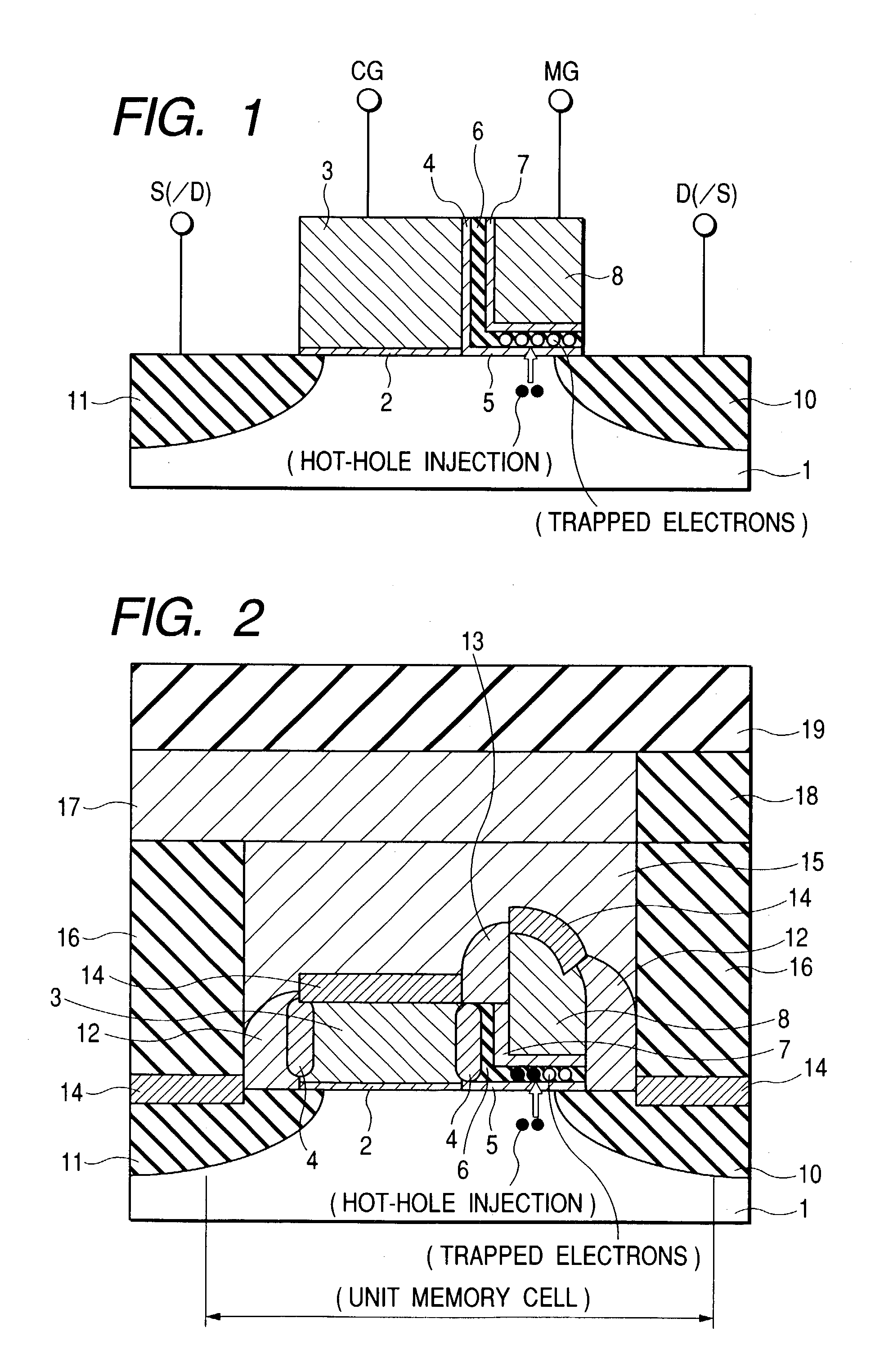Semiconductor integrated circuit device and a method of manufacturing the same
a technology of integrated circuit and semiconductor, applied in the field of semiconductor integrated circuit devices, can solve the problems of reliability of conventional second memory cells, large drawbacks in logic-mixed flash memory modules which need high-speed reading, and small drain current at the time of reading operation in low threshold voltage state, so as to prevent undesired charge leakage, reduce the possibility of undesired charge leakage developed via the second gate electrode, and achieve satisfactory charge pull-out or drawing performance.
- Summary
- Abstract
- Description
- Claims
- Application Information
AI Technical Summary
Benefits of technology
Problems solved by technology
Method used
Image
Examples
Embodiment Construction
[0180]Preferred embodiments of the present invention will be described in detail with reference to the accompanying drawings. Incidentally, components having the same function in all of the drawings are respectively identified by the same reference numerals, and their repetitive description will be omitted. In the following description, a MOS (Metal Oxide Semiconductor) transistor (also simply described as “MOS”) will be used as one example of MIS transistors (or MISFET), which are generic names for insulated gate field effect transistors.
[0181]>
[0182]A nonvolatile memory cell transistor (also simply called a “memory cell”) applied to a semiconductor integrated circuit device according to the present invention is illustrated in FIG. 1 in the form of a vertical cross-section. A first structural viewpoint related to the memory cell transistor resides in writing and erasure operations based on electron- and hot-hole injection, and a split gate structure. Namely, the memory cell transis...
PUM
 Login to View More
Login to View More Abstract
Description
Claims
Application Information
 Login to View More
Login to View More - R&D
- Intellectual Property
- Life Sciences
- Materials
- Tech Scout
- Unparalleled Data Quality
- Higher Quality Content
- 60% Fewer Hallucinations
Browse by: Latest US Patents, China's latest patents, Technical Efficacy Thesaurus, Application Domain, Technology Topic, Popular Technical Reports.
© 2025 PatSnap. All rights reserved.Legal|Privacy policy|Modern Slavery Act Transparency Statement|Sitemap|About US| Contact US: help@patsnap.com



